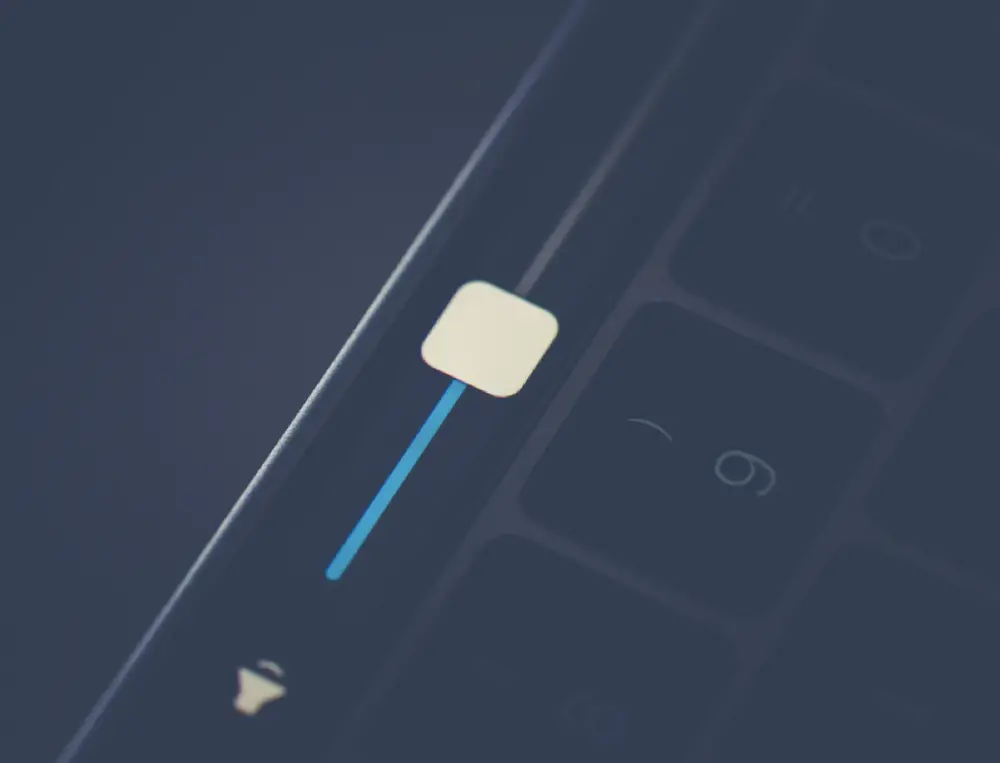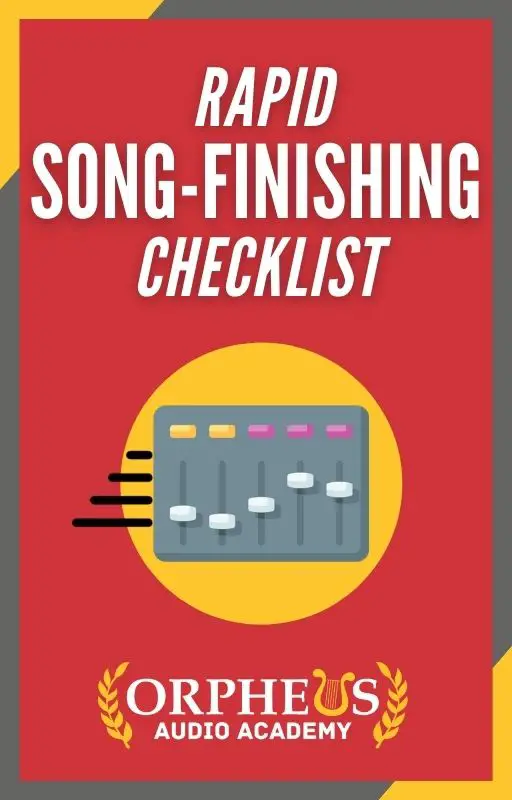Have you ever completed a mix only to compare it to your favorite songs and find that it just sounds way too quiet?
You try turning up the volume of your track or tracks, but then you start running into clipping or distortion problems?
This can be very frustrating, but there is actually a pretty simple solution...
You can make your mix louder without clipping by using a limiter. A limiter allows you to set peak loudness, preventing clipping, while also allowing you to increase the volume of all other sounds in your mix.
While a limiter will absolutely prevent your mix from clipping, and it will also make your track louder (see below for how to use a limiter), a limiter may not actually be enough.
A limiter will keep your master from clipping, and it will turn up louder songs, but your song may still not sound, on average, as loud as what you're hearing on Spotify or the radio.
Keep reading for strategies on how to make your songs louder without clipping or distorting.
Why Is My Mix So Quiet?
I remember when I first got into music production, after finishing a new batch of songs, I'd be so excited to burn them to a CD and try them out in the car.
Sometimes I'd burn my songs to a CD with other professionally produced songs that had already been released and I'd notice a huge difference.
Production quality aside, I noticed that my tracks were way quieter, and I'd find myself having to jack up the volume in order to listen at the same level.
Why? I wasn't using a limiter on my tracks (I didn't even know what a limiter was or why there were necessary at the time).
Most likely, your mixes are too quiet because you haven't placed a limiter or limited properly, or your average sound level (Loudness Unites relative to Full Scale--LUFS) is too low.
In order to make your mix sound louder, be sure to place a limiter at the end of your signal chain, and monitor your LUFS, and make sure.
How Loud Should My Mix Be?
However, a general rule of thumb is to keep your level no higher than -6db, an louder than -8 short-term LUFS.
How To Make A Song Louder Without Losing Quality

So, without further ado, how do you make your track louder without clipping or losing quality?
Here are some strategies...
Increase Actual Loudness
I know, kind of obvious, but have you actually checked to see you're getting the most volume you can out of your track without going over -6db?
Turn Up The Volume
Adjust your sliders or use a gain plugin to set your volume levels and balance the way you want, ensuring that you're going above -6db.
Automate The Volume
You can also automate the volume.
If there are sections in your song where your lead instrument, be it a vocal, guitar, or synth, is getting buried in the mix, try automating the volume to bring it up in those certain sections where it's buried.
This is also a good trick to use on the chorus/hook sections of your song. Your verses should be slightly quieter than your choruses, and you can use volume automation to accomplish this.
Pick up the volume slightly leading into your choruses, as this will help them stand out and boost their energy.
Boost Desired Frequencies
You may also have some frequencies areas that are lacking in your mix that you can boost with a little EQ.
For example, a simple tweak you can do to trick the human ear is to slightly boost around the 3khz range to make your track sound louder and and better.
Increase Perceived Loudness
If you've tried the above steps, then likely what you really need to do is increase the perceived loudness of your track.
But what is perceived loudness?
Perceived loudness is a psycho-acoustic quantity that depends on sound pressure level, the frequency spectrum, and the time behavior of the sound in question...
A volume increase of 6 to 10 dB in gain level should give a
sense of doubling the loudness, the psychoacousticians tell us.
In other words, because of the way the human ear works, how loud a sound actually is (sound pressure level, or decibels [db]) doesn't necessarily determine how we perceive a sound.
Certainly, if you increase the decibel level of a sound, it's going to sound louder, but this isn't the most accurate way of determining what we consider loud, at least when it comes to music production.
Instead, you want to look at "LUFS"... "Loudness Unites relative to Full Scale".

LUFS
LUFS, or 'Loudness Unites relative to Full Scale', describe loudness without direct absolute reference. LUFS matches how our ears actually perceive sound.
To summarize that technical jargon, your track might be the proper loudness in terms of db level, but still lack in loudness because it is lacking in LUFS.
Here are a few ways you can boost your perceived volume without actually increasing the volume of your track...

Create Better Songs, Faster
Click below to download my free song-finishing checklist to help you create radio-ready songs without taking months to complete them.
Compression

What Is A Compressor?
A compressor is an amplifier who's output gain (db) reduces as input gain (db) increases. (Low volumes are raised as high volumes are reduced).
Or, another way of thinking about it, a compressor is kind of like an automatic volume knob.
If a sound's gain crosses the threshold you set, it's volume will be turned down. If you then increase the make-up gain, you'll then be turning up the volume of quieter levels in that particular sound.
But using compression, you can reduce extreme dynamics to make your instruments or entire mix to sound fuller and louder without actually increasing the loudness, and thus, not clipping or distorting.
Harmonic Saturation
Another way to increase perceived loudness is to use harmonic saturation.

What Is Harmonic Saturation?
Saturation is a subtle form of distortion that adds pleasant-sounding harmonics.
This effect originates from the days of analog equipment when audio recordings ran through various pieces of hardware. Because the physical nature of this gear, when the sound signal ran through them, they would add subtle amounts of distortion or "coloration" to the sound.
A harmonic is a subtone or overtone frequency that is an integer multiple of a fundamental tone.
In other words, when you add saturation to a sound, if that sound is primarily in the, say, 440hz range, it will add in other frequencies both above (overtone) and below (subtone) the fundamental (440hz).
Saturation adds more frequency content to a sound, and therefore, can make your song sound louder without actually increasing the volume and clipping or losing quality.
Dynamic Processing
You can also use dynamic process to increase perceived loudness.

What Is Dynamic Processing?
Dynamic processing is the process of altering the dynamic range of an audio source to make it easier to place in the overall mix.
Technically, compressors and limiters are both examples of dynamic processors, as how much they effect your sound is determined by how much level is going through them at any given time.
In other words, how much a compressor is compresses changes over time (dynamics). Unless, of course, you set your threshold so low that your compressor or limiter is constantly compressing.
But what I'm more talking about here are using Expanders.

What Is An Expander?
An Expander is an amplifier who's output gain increases or reduces after the signal crosses a threshold.
Rather than EQing an entire frequency range, or compressing an entire signal, you can use dynamic processing and either cut or compress a certain frequency ONLY when it becomes problematic.
This helps to avoid over-compression, and allows your track to breathe more.
Cut Unwanted Frequencies
This may sound counter-intuitive, but you can actually make your track sound louder by cutting frequencies!
For example, a lot of your instruments may contain low-end or bass frequency content that you don't really need, and can't really even hear.
You may think, "If I can't hear it, what's the big deal about leaving it in?"
However, by leaving it in, when you go to compress and limit your track, your plugins are going to detect those low levels and boost them, which takes up precious db space in your mix.
But cutting unwanted frequencies, the frequencies you DO want will stand out, sound louder, and you'll also get a cleaner, less muddy mix.
Speaking of which, check out my article here on how to fix a muddy bass sound.
Panning
As probably know, panning is essential to creating a pleasant, stereo mix. Without panning, and even dynamic panning, all you really have is a mono mix, which is just flat and boring.
However, what you may not know is that making space in your mix with panning can also increase the perceived loudness.
By panning sounds across the stereo field, you'll allow your sounds and instruments to stand out, and prevent multiple sounds from masking each other.
As a result, your individual sounds will cut through the mix better, increasing perceived loudness.
Panning Tip
Place your lower frequency sounds near the center and work outward panning higher frequency content out the furthest.
Limiting
And now we've arrived at the most important element of a pleasantly-loud track: limiting.

What Is A Limiter?
A limiter is an amplifier who's output gain (db) has a volume limit that remains the same regardless of it's input level (RMS & PEAK).
In layman's terms, you can crank up the input level on a limiter as much as you want (making the song louder), and the peak level of your track will never get any higher.
So with a limiter, you can set the level at which you want your loudest sounds in your song to hit, and then increase the input level.
What this will do is make the sounds that are quieter in your mix louder, while preventing your loud sounds from getting any louder, preventing clipping.
Of course, you can always go too far and squash your track with too much limiting. But done right, a limiter is going to help you get 90% of the way to matching the loudness level that you hear all the professionals putting out.
Combine that with the other tips I mentioned above, and you'll never struggle with loudness ever again!
Limiting Tip
Set an out ceiling of -0.1 to -0.3, and decrease Threshold until the loudest portion of your song is experiencing consistent attenuation between -1 to -6 db.
Conclusion
The key to getting a loud track that matches what the pros are producing without clipping, distorting, or losing quality is 10% increasing the actual loudness, and 90% increasing the perceived loudness.
And the quickest and most effective way to increase perceived loudness is by limiting.
Finish More Songs, Faster
Of course, creating a sufficiently and pleasantly loud track is only one part of creating professional-sounding songs.
If you want to finish more radio-ready songs, and complete them faster without having to spend months or even weeks on end working on the same songs over and over, not even knowing if you're making them any better...
Then grab my free Rapid Song-Finishing Checklist below.
You'll discover a proven step-by-step system for completing professional-sounding songs.

Create Better Songs, Faster
Click below to download my free song-finishing checklist to help you create radio-ready songs without taking months to complete them.
This will be especially beneficial if you find yourself working on songs for hours on end only to look back and wonder if you actually made your track any better.
I hope you got value from this post on, How To Make Your Mix Louder Without Clipping Or Distorting!
If so, feel free to share it, and let me know in the comments below...

EXCELLENT-THANK YOU SO MUCH!
You’re very welcome! Glad it was helpful!